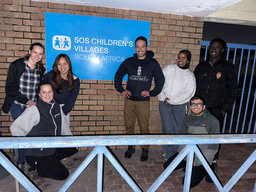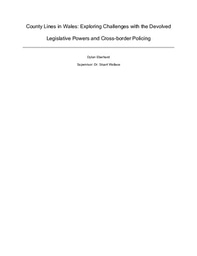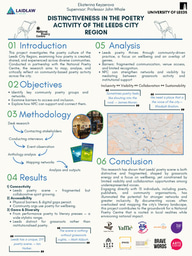Queer Lives: Narrations of Work Abroad (June 8)

Mumbai is always narrated by water. Whether the unforgiving, knife-quick downpour of monsoon rains, or the unending vastness of the Arabian Sea, the city has always been subject to the whims of water. In fact, the city was, until 1845, not a city at all: for centuries, the area consisted of seven distinct islands, home to communities of Marathi-speaking Koli people. The islands were under the control of various indigenous rulers until the mid-sixteenth century, when they were ceded to the Portuguese Empire; in 1661, the land was given to the East India Company as part of the marriage between Catherine of Braganza and Charles II. It was only in the late eighteenth century when Mumbai began to be reshaped, and the area between the islands was gradually reclaimed, shaping the city into a major seaport. To me, however, reclamation doesn’t seem to be the right word: it implies that the land was taken back, when in fact the sea was there first.
Even after the connection of the seven islands, Mumbai has remained a city defined by its shores. The power of the Bombay seaport brought enormous economic growth to the area, and it continues to be a valuable asset – but the point I want to bring attention to now isn’t trade, or travel, or even the miles of beach-lined land: it’s traffic. For years, to get between mid-town areas, such as Bandra, to the southern districts, there was only one road, which quickly bottlenecked and was consistently congested at any time of the day. In peak traffic, it could take hours to drive the twenty-kilometer distance. The solution, in true Mumbai fashion, was to turn to the sea. Commissioned in 1999, the Bandra-Worli Sealink – or, as most people call it, the Coastal Link – stretches the length of the western coastline. It’s not finished yet, but sections of the bridge have opened in phases over the last fifteen years, nearly halving the commute through the city. And, I realise, as we speed down the wide motorway, surrounded by gaping stretches of sea, it offers some of the most phenomenal views of Mumbai. As Asok Uncle tells me this history, which I offer to you now in a hopefully accurate retelling, I stare out the window, watching the rises of Colaba emerge against the candy-blue sky.
Thanks to the Sealink, it only takes us half an hour to reach downtown. When Revathi Auntie first refers to the area as downtown, I question her – Bandra, with all its bustling corners and bright life, seems a natural downtown. But, as I step out of the car into the glimmering sun and greet the wide grandiosity of Kala Ghoda, my doubt fades. It’s my first time back in south Mumbai this trip, and I spent several minutes dumbstruck in the parking lot, head tilted back to take in the colourful windows, the curved stone archways, and the constant movement: cars, people, autos, buses – there is no cease to the busyness of life.
Crossing the road, we head first into a tan, castle-like building: three stories of neogothic build, with trim white framing tapering off into towers. Revathi Auntie tells me that this is the David Sassoon Library and Reading Room. Founded in 1847, the repository has seen decades of literature through its walls, and currently acts as an archive, library, and reading room space for students and researchers. Technically, it’s members-only entry, but the watchman spots our curiosity and allows us a quick foray inside. I spend most of the few moments we have staring at the collection of prints in the front hall: one, encased inside a large glass cover, depicts a snake so lifelike I fear it will jump out at me.
Stepping back out into the burning heat – I am quickly regretting my choice to wear full-length pants – we head down the street. It truly is an absolute joy to explore Mumbai with Revathi Auntie and Asok Uncle: not only do they know the city like an old friend, but they also have so many stories to share – the movie theatre where they had their first date, the restaurant where they were engaged, the building where they went to work every day for years and years. Their lives are entangled with the city, and walking with them, I view each building and every street corner through a new lens.
Right now, we’re walking through Kala Ghoda, which literally translates to black horse. As Asok Uncle tells me, the name refers to a black stone statue of King Edward VII, the former Prince of Wales, mounted upon a horse. According to legend, the statues of King Edward and Chhatrapati Shivaji, a revered seventeenth-century Marathi ruler, come to life after midnight to battle through the streets. Or at least, they did – until 1965, when the statue of King Edward was removed from the precinct. Now, only the facade of a black horse remains, standing guard. It watches us now, eyes dark and steady, and I wonder if it might come to life when the sun goes down, as the old myths say.
We head next to the Jahangir Art Gallery, which is currently displaying an exhibition on Indian female printmakers. Grateful for the rush of air conditioning, we spend a quiet hour examining the four floors of prints and picking our favourites. Several stand out to me: one, an octopus grabbing a wheelchair, hovering just under the ocean surface; two, a series of dancers, stood in formation, waiting for the rain; three, a crowded bar at JFK airport. Some tell tales, and others capture a moment. I make a game of it in my head, try to reconstruct the story of a piece. The man with a drink at the bar – just over there, in the right corner of the print – he's just missed his flight. The person just to his left is early for theirs. Maybe they were meant to meet here, over an old-fashioned and airport peanuts – or maybe they’ll never speak a word to each other. That’s up to them, I figure.
Leaving the gallery, Asok Uncle leads us further south to the seaside. I am reminded, walking with him, how much history Mumbai truly holds. Obviously, it’s an ancient city, which has seen the rise and fall of tribes and civilisations and empires, the merging of languages and the sharing of cultures, destruction and creation and everything that comes in between – but it’s one thing to read about it, and another to see it. Asok Uncle points out every building to me, explaining its unique past – that there’s the mosque, and here’s the Taj, and over in the corner is the oldest hotel in the city. I feel utterly transported, placing my feet on the same ground that people have walked through for hundreds of years. My favourite anecdote, though, is the one he tells me about the Taj, which stands majestically over the shore, several feet of white stone and luxury – and, apparently, backwards. The famous hotel, designed in London, was built incorrectly; now, what was initially intended to be the entrance lies on the absolute wrong side of the building.
We head for lunch at an Irani cafe tucked away into the side alleys of Kala Ghoda. Originally opened in the 19th century by Zoroastrian Irani immigrants fleeing the Safavid empires, these cafes were popular through the city, but now, only a few original ones remain. They are known best for Irani chai – a thicker, creamier, and generally sweeter take on the masala chai I am familiar with. Here, I happily engage myself with a cous-cous and sausage bowl, topped with roasted peppers, a yoghurt-harissa dressing, and lemon. The sausage is perfectly spiced and melts like butter on my tongue, warmly flavoured against the refreshing chill of the yoghurt. I am also delighted to find that the cafe serves one of my favourite drinks: salted lime soda, tangy and briny and impossibly cool in the summer sun.
The rest of the day is left for exploration: we lazily stroll down the maze-like back roads, stopping to pick up a few cartons of tea and general knickknacks from various stores along the way. We end up at Kitab Khana, a sprawling bookshop inside a 150-year-old colonial building. And oh, I could spend hours here – tucked in a corner reading, or browsing the shelves of history and fiction and mythology, or sat in the backroom with a cup of coffee. Slightly embarrassingly, I lose Revathi Auntie and Asok Uncle immediately in my excitement to scour the different sections. Several minutes later, three books in hand, I find them waiting at a bench, laughing at my obvious excitement.
The drive home is quick, and the sky is only just beginning to darken by the time we turn into Bandra. Still, I’m tired: even though we were only out for a few hours, the incessant heat is draining, and I collapse gratefully on the couch under the fan. Honestly, the rest of the day blurs together; the three of us sit quietly, reading and listening to music and having the occasional chat. I watch the rain start slowly, and then come down all at once, pooling on the grey concrete below. I notice now, my head tilted out the window, that the birds stop their song every time the rain comes down. You can hear them throughout day and night, chirping and calling – but when the storms start, they fall silent, as if they’re listening. It’s probably coincidental – but it’s a nice thought. Maybe they, like me, are waiting for the monsoon.





Please sign in
If you are a registered user on Laidlaw Scholars Network, please sign in